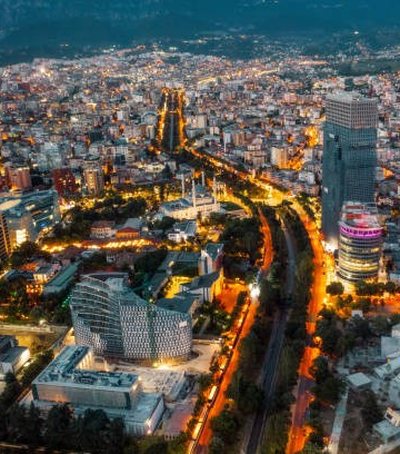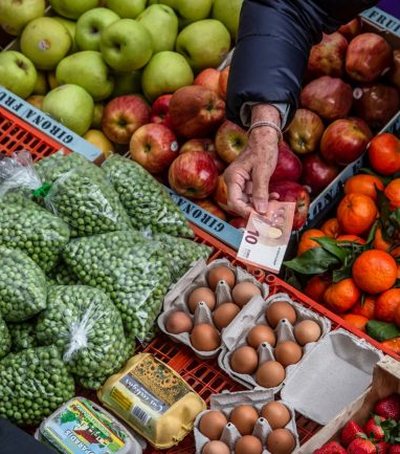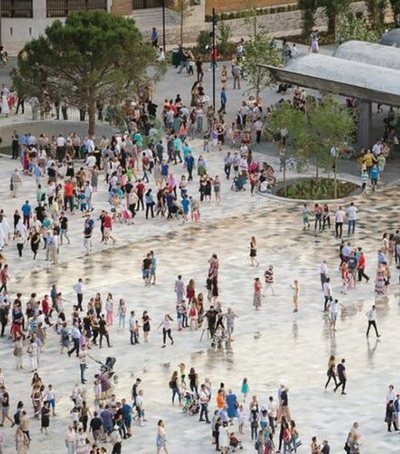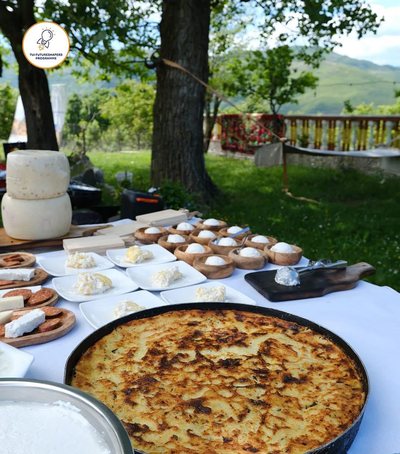
Though officially poor, Albanians are able to move, leaving aside the pleasures of life, having the help of immigrant relatives, or receiving income from informal, not-so-small activities.
Bank of Albania data show that by the end of the first quarter of 2019, individuals had deposits in banks of about ALL 952 billion, or about 7.6 billion euros, or about 82% of the total deposits in banks. In relation to the same period last year, household savings in banks were almost 4%.
The Monitor has processed the data of the Bank of Albania and INSTAT, extracting cities with the highest level of deposits per capita at the end of the first quarter of this year.
Tirana, the capital city where one third of the population lives and operates 40% of the businesses has the highest level of deposits per capita, with 3,086 euro per capita. Tirana is also the city with the highest per capita income of about 5 thousand euros and having the highest monthly spending on household consumption at the national level. In absolute terms, residents of Tirana have in banks about 345 billion ALL savings, or 68% of deposits in the capital. The rest are mainly businesses, where half of them are concentrated in the capital.
Second, the per capita indicator is Vlora, with â?¬ 2,860, on a similar level to Tirana. The returnees have managed to save so much, though their per capita income is below the country's average (According to INSTAT, per capita income in Vlora is 3,362 euros and the average of the country is 3,734). Even monthly spending per capita of families is as much as 66% of those in the capital city. Other INSTAT data show that Vlora is among the highest unemployment districts in the country, with 18.5% in the end of 2018, the second after Lezha. This contrast of high savings in relation to income and unemployment can be explained by the fact that historically Vlora, for its own geographical position, has been a destination for illegal trafficking, generating informal income as well as migrant flows. In total, Valencian households have 67.8 billion ALL in banks, ranking the third in absolute value after Tirana and Durres.
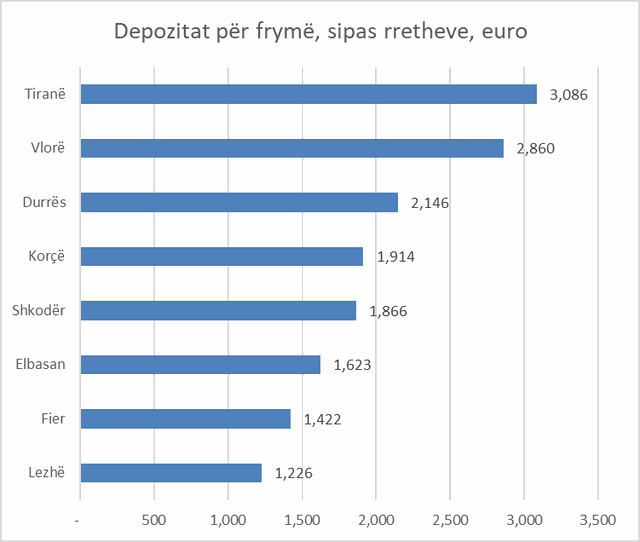
Instead of the third, the high level of savings in relation to the population is durrsakët, with 2,146 euro per capita. Durres ranks fourth in per capita income in the country, after Tirana, Fier and Gjirokastra, but is second in the monthly spending of households.

Fourth, there are corners, which, though distinguished as economists, have managed to have a 1,914-euro deposit for residents by the end of the first quarter 2019. Korcars are austerity and the monthly spending of households, ranking in the three lowest-spending districts along with Elbasan and Vlora.
Shkodraans have a similar level of savings with Korça. Elbasan has this indicator at 1,623 euros. Fierac, though ranked second in per capita income, is not so good, with about 1,400 euros per capita. Last, from the districts reporting the Bank of Albania rank the Lezha, with about 1,226 Euros deposits.

During the last year (TI 2019 / TI 2018), the largest increase of individuals' deposits in absolute value was recorded in Tirana (+22 billion Lek), followed by Durres (+3.1 billion ALL), while the only city that scored the decrease was Fieri (-668 mln lekë).
Source: Monitor

